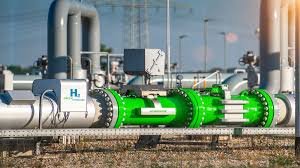Avaada and Casale Collaborate on 1500 TPD Green Ammonia Plant in Odisha
Introduction to the Collaboration
Avaada Group, a prominent player in the renewable energy sector, has partnered with Casale, a global leader in ammonia technology, to set up a 1500 TPD (tons per day) green ammonia plant in Odisha. This collaboration marks a significant step in India’s commitment to sustainable energy and green hydrogen projects. The plant is set to provide a greener alternative to traditional ammonia production, reducing the carbon footprint and promoting clean energy solutions.
About Green Ammonia and its Importance
Green ammonia is produced using renewable energy sources such as wind and solar power, making it an environmentally friendly alternative to the conventional ammonia production process, which relies on fossil fuels. This partnership aims to reduce the dependency on non-renewable energy sources and align with India’s commitment to achieving net-zero emissions by 2070.
The Role of Avaada and Casale in the Project
Avaada, known for its renewable energy ventures, has been actively involved in India’s transition towards sustainable energy. Casale, with decades of experience in ammonia production technologies, will provide its advanced technology for the project. Their combined expertise will ensure the successful development of the green ammonia plant, which will have a crucial role in supporting India’s fertilizer and energy sectors.
Economic and Environmental Impact
The establishment of the green ammonia plant will not only help in reducing carbon emissions but also create job opportunities in Odisha, contributing to the local economy. Moreover, the plant will supply ammonia for various industries, including agriculture, where it is primarily used as a fertilizer. By ensuring cleaner ammonia production, the project also plays a pivotal role in promoting sustainable agricultural practices in India.
Future Prospects for Green Ammonia in India
This collaboration is a step toward a more sustainable energy landscape in India. As India moves toward a greener future, the demand for green ammonia is expected to rise, especially in sectors like agriculture, energy storage, and transportation. This project will set the stage for similar initiatives across the country, paving the way for further technological advancements in green energy solutions.

Why This News is Important
Green Ammonia and India’s Sustainability Goals
This collaboration aligns with India’s broader sustainability objectives, such as achieving net-zero emissions by 2070 and advancing the renewable energy sector. By investing in green ammonia, the country is taking a vital step toward reducing its reliance on fossil fuels while meeting the growing demand for fertilizers and clean energy. This project also showcases India’s commitment to the global green energy movement, which is crucial for achieving long-term environmental goals.
Supporting India’s Agricultural and Industrial Growth
The green ammonia plant will not only contribute to the fertilizer sector but will also reduce the environmental impacts associated with conventional ammonia production. Agriculture, which is heavily reliant on ammonia-based fertilizers, stands to benefit significantly from the environmentally friendly methods of production proposed by the project.
Historical Context
India’s push for green energy solutions is part of its broader strategy to combat climate change and promote sustainable growth. The country has been setting ambitious renewable energy targets, aiming to become a global leader in clean energy. The introduction of green ammonia is a crucial part of this strategy. Traditionally, ammonia production has been carbon-intensive, using fossil fuels like natural gas. The introduction of green ammonia technology will contribute significantly to reducing emissions in the energy and agricultural sectors.
Furthermore, India has been actively engaging in collaborations with global partners to bring innovative solutions to its energy and industrial sectors. This partnership between Avaada and Casale is one of many such initiatives, marking a milestone in India’s energy transition journey.
Key Takeaways from Avaada and Casale’s Green Ammonia Plant Project
| # | Key Takeaway |
|---|---|
| 1 | Avaada and Casale have partnered to establish a 1500 TPD green ammonia plant in Odisha. |
| 2 | The plant will use renewable energy sources, producing ammonia with minimal carbon emissions. |
| 3 | Green ammonia is a cleaner alternative to traditional ammonia, important for agriculture and energy. |
| 4 | The project will create jobs in Odisha, contributing to the region’s economic development. |
| 5 | This collaboration supports India’s goal of achieving net-zero emissions by 2070. |
Important FAQs for Students from this News
What is the significance of the Avaada-Casale collaboration for India?
The collaboration is significant as it will help India transition to green ammonia production, reducing carbon emissions and promoting sustainable energy practices, which are key to India’s renewable energy and climate goals.
What is Green Ammonia?
Green ammonia is produced using renewable energy sources, such as solar and wind, unlike traditional ammonia that relies on fossil fuels, making it an environmentally friendly option for industries like agriculture and energy storage.
Where will the green ammonia plant be established?
The plant will be established in Odisha, contributing to the local economy and supporting India’s renewable energy infrastructure.
How does this project contribute to India’s climate goals?
By reducing the carbon footprint of ammonia production, the project supports India’s commitment to achieving net-zero emissions by 2070.
What industries will benefit from this green ammonia plant?
Primarily, the agriculture sector will benefit as ammonia is a key component of fertilizers. The energy and industrial sectors will also benefit from cleaner ammonia production.
Some Important Current Affairs Links


















